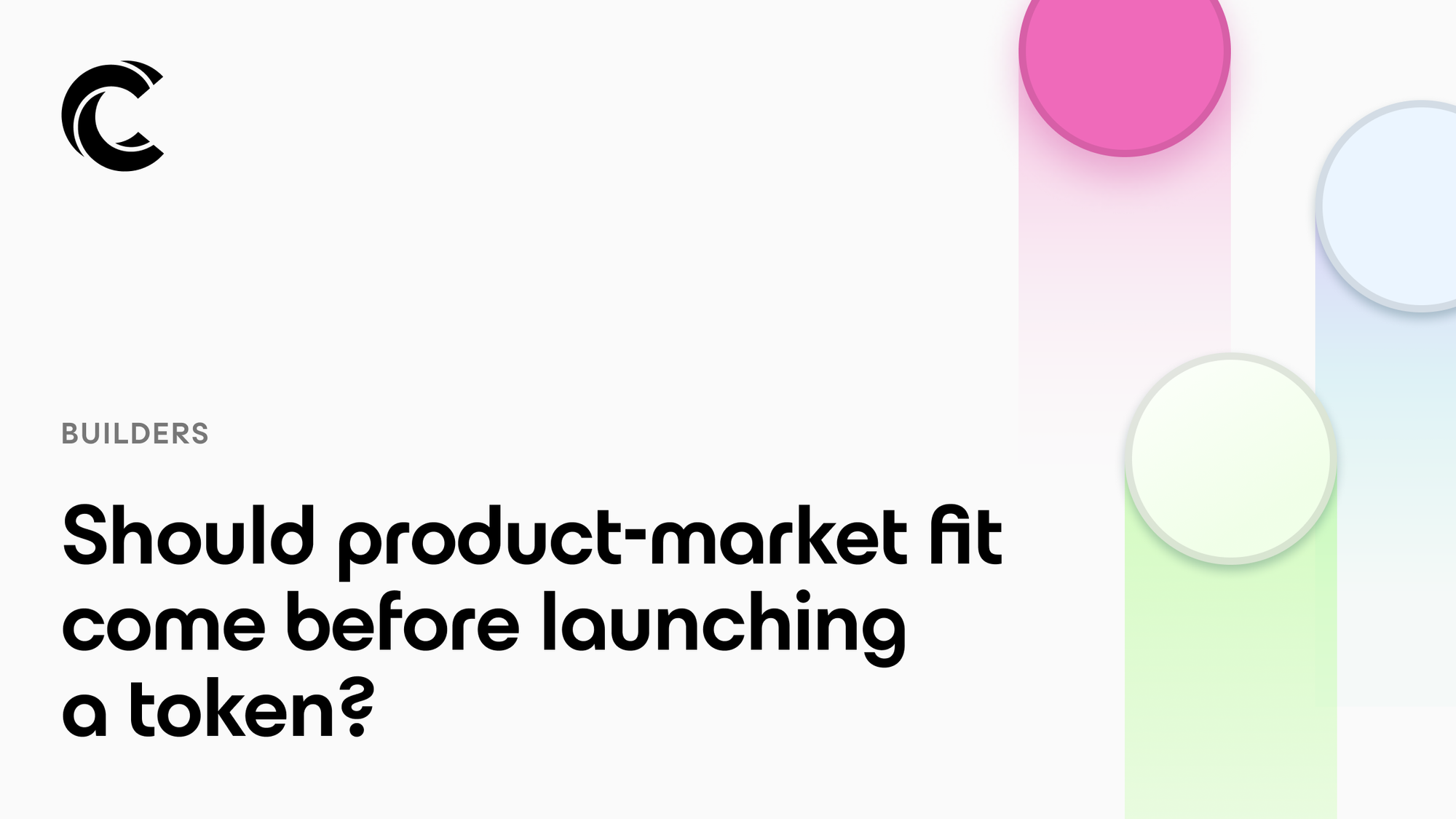Should product-market fit come before launching a token?

According to American businessman Eric Ries, product-market fit is “the moment when a startup finally finds a widespread set of customers that resonate with its product.”
Despite the differences between Web2 and Web3 startups, the classic wisdom on product-market fit (“PMF”) very much applies to crypto: find it, or die.
This begs the question: Should product-market fit come before launching a token?
The short answer is, it depends on how much your product needs a token to find PMF. Where your product sits on the spectrum of token use will dictate the timing of when to best introduce a token.
In this piece, we’ll explore the problem of launching a token prior to PMF and the few instances where it may be appropriate.
The problem with launching a token prior to PMF
Let’s be honest — there are plenty of tokens in existence that don’t do anything imperative for the product they serve.
Crypto products that do not rely on a token to function should strive to secure PMF before launching a token, as the decentralized nature of these projects makes post-launch adjustments incredibly difficult. For example, while governance tokens may be core to a project’s ecosystem, they are not core to the product.
Introducing a token too early can hinder the process of finding PMF by distorting incentives, influencing user behavior, and locking in specific product elements. Additionally, altering a token’s economic model after launch is often challenging, even when such changes are necessary to achieve PMF. And while token incentives may attract users initially, they cannot ensure long-term user retention or address underlying product issues that must be resolved prior to launch.
When it’s appropriate to launch a token before PMF
For crypto products that have token design at their core (these are few), a token is actually necessary for the functionality of the product and must be released before PMF is found.
Examples where tokens are essential to finding PMF include any Layer 1 that derives economic security from miners or validations such as Bitcoin, Ethereum, Solana, and Binance Chain, or DePin networks that necessarily rely on token emissions to bootstrap the supply side of the network such as Helium and Dimo.
Although not entirely common, there are certain DeFi networks that require a token to properly align incentives in the network (excluding governance). The token networks for these products must be operational to scale and achieve incentive alignment.
When it’s not appropriate to launch a token before PMF
While many products have tokens, few crypto actually rely on a token to operate. The most common use of a token is to effectively bootstrap customer acquisition (or ultimately for exit liquidity). The best example of this working effectively might be Blur. They were able to leverage incentives in the form of their native token to vampire attack OpenSea, which at the time was the leading NFT marketplace.
While tokens can be effective for bootstrapping customer acquisition, if the product doesn’t have true PMF, then you are inevitably going to see a massive drop off in activity when those incentive campaigns end (see all major airdrops of 2024).
Conversely, if you take a product that already works and add on incentives to boost customer acquisition (and in many cases decentralize governance), you’ll get the benefit of supercharging growth.
Take Compound, for instance. While they have a native token for governance, the token is not critical to the core product offering (decentralized lending). Compound had significant product traction before introducing their token.
Similarly, Uniswap captured the lion's share of decentralized trading with version 2 of its protocol prior to launching a token. They effectively fought off a vampire attack from SushiSwap by matching incentives through their own token.
More recently, Polymarket found tremendous PMF with their decentralized prediction market where users can bet on real-world event outcomes using USDC, rather than a volatile native token that fluctuates in price.
To sum up, unless your product truly depends on having a token, you should be well on your way to PMF before launching a token. If you’re not, you risk your token slowing down your growth, instead of fueling it.
Interested in launching a token? Contact us here.
Legal notice
Token Launches are unavailable to residents in the U.S. (and its territories), Canada and certain other jurisdictions.
This blog post is being distributed by CoinList Global Services Ltd., dba “CoinList,” or one of its subsidiaries. CoinList does not provide—and this post shall not be construed as—investment, legal or tax advice. This blog post and use of the CoinList website is subject to certain disclosures, restrictions and risks, available here.
